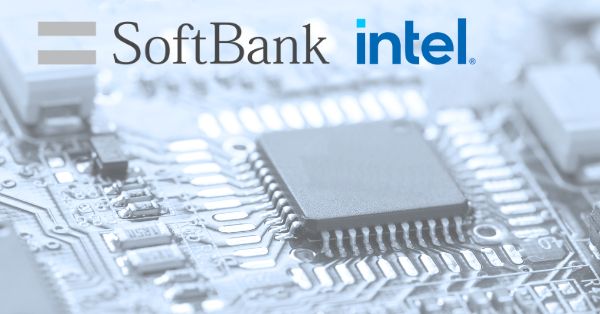Why SoftBank’s $2B Intel Investment Matters for the U.S. Semiconductor Sector
A large strategic investor is leaning into U.S. chipmaking just as AI infrastructure, policy, and supply-chain risk converge.
Deal Snapshot: $2B Stake, 2% Holding, $23 Entry
SoftBank will invest $2 billion in Intel, taking roughly a 2% stake at $23 per share and becoming one of Intels largest shareholders. The move arrives after Intels stock lost about 60% last year, then rebounded double-digits year-to-date as leadership changed hands to CEO Lip-Bu Tan. It is a financial vote of confidence in a company trying to reestablish process leadership, scale a foundry business, and convince marquee customers to commit to external wafer orders.
SoftBank’s AI Supply-Chain Strategy and Rationale
SoftBank has been assembling an AI supply-chain franchise that spans IP, compute, and infrastructure. It owns Arm, agreed to acquire Arm server CPU designer Ampere Computing, injected massive capital into OpenAI, and aligned with Oracle under the Stargate hyperscale AI initiative backed by the current U.S. administration. It also picked up a Foxconn facility in Ohio to convert into an AI data center equipment hub. A strategic stake in Intel complements that footprint with domestic manufacturing, advanced packaging, and a potential alternate path to leading-edge capacity outside Asia.
Market Signal: Demand for U.S. Advanced Manufacturing
The investment underscores strategic demand for U.S.-based advanced manufacturing as AI workloads surge and supply-chain diversification becomes board-level priority. It also increases external pressure on Intel to translate roadmap slides into high-volume, high-yield production and real foundry revenue beyond internal chips.
Intel Turnaround: Foundry Strategy, 18A Node, and Competitive Gaps
Intel is attempting a multiyear pivot: regain process competitiveness, scale Intel Foundry, and capture AI silicon demand while navigating policy scrutiny.
Intel Foundry: Anchor-Customer Gap and Capex Discipline
Intels foundry unit has yet to land a flagship anchor customer. Management recently signaled it will stage some future investments until firm orders arrivean acknowledgment that capital discipline now sits alongside technology execution. Without external design wins, utilization risk stays elevated and cost curves remain tough versus incumbents with fuller fabs.
Technology Position: Intel 18A, Foveros/EMIB, and PPA/Yield
Intel is the only U.S.-headquartered company attempting to manufacture at the leading edge domestically, with process nodes like Intel 18A and advanced packaging such as Foveros and EMIB. That is strategically important for national capacity and for customers seeking geographic diversity from TSMC and Samsung. Still, leadership is measured in yields, PPA (power, performance, area), cost, and time-to-market. In accelerators, Intel trails Nvidia and AMD in market share and ecosystem traction. Closing gaps in both process and product will determine whether Intel can monetize the AI boom rather than spectate it.
Governance, Policy, and Capital Intensity
Intel remains under a political microscope in Washington, with ongoing dialogue around domestic manufacturing, incentives, and even the prospect of direct government equity. The companys leadership transition adds execution risk but also a chance to reset customer relationships. Capital intensity stays high; the bar for returns is higher.
What Intel’s Path Means for Telecom, Cloud, and Edge AI
The intersection of AI buildouts, network modernization, and sovereign supply goals puts Intels trajectory on every CTOs watchlist.
Impact on Network Operators and Hyperscalers
AI data center demand is pulling the entire semiconductor stack. If Intel proves competitive at 18A and in advanced packaging, operators and cloud providers gain a credible U.S. manufacturing alternative for CPUs, accelerators, and custom ASICs. Foundry access could enable bespoke silicon for AI inference at the edge, baseband offload, and security modules. Conversely, if Intel slips, dependency on TSMC-based supply persists, concentrating risk in a tight ecosystem around Nvidia, AMD, and select ASIC vendors.
Implications for OEMs and Edge AI Builders
Shorter, regionalized supply chains are becoming a requirement for ruggedized edge AI, private 5G, and Open RAN deployments. Intels packaging and onshore capacity could benefit systems that blend x86 control planes with Arm or custom accelerators. Watch how Intels roadmap aligns with telco workloads like vRAN Layer 1 offload, inline acceleration, and confidential computing. If SoftBanks Arm portfolio (including Ampere) intersects commercially with Intel Foundry, it could expand Arm server and edge options manufactured in the U.S.
Ecosystem Dynamics: Arm, Ampere, OpenAI, Oracle
A SoftBankIntel axis might catalyze new collaborations across IP (Arm), CPU roadmaps (Ampere), AI platform demand (OpenAI), and data center builds (Oracle partnerships and Ohio facility conversion). Any commercial alignmente.g., Arm designs taped out on Intel nodes or Ampere devices fabbed by Intelwould be a step-change for Intel Foundrys credibility.
Key Risks, Metrics, and Timelines to Watch
The next two to four quarters will reveal whether this is a narrative shift or an execution turnaround.
Execution and Cost: Yield, Cost/Transistor, Design Ecosystem
Key risks include yield ramp on 18A, cost-per-transistor versus TSMC, and the maturity of Intels design ecosystem (PDK quality, EDA flows, packaging toolchains). Delays or cost overruns would dull the benefit of SoftBanks endorsement.
Customer Traction: External Wins, Wafer Starts, Packaging
Look for named external foundry wins, initial wafer starts for non-Intel designs, and proof points in advanced packaging capacity. Any announcement tying Intel to high-volume AI accelerators or significant CPU designs will be pivotal. Signal value also comes from supply agreements tied to Stargate-related builds.
Policy and Financing: CHIPS Incentives and Export Controls
Monitor CHIPS-related grants and tax credits, any movement toward a U.S. equity stake, and export control shifts that may affect tool deliveries or customer mixes. Capex guidance versus committed orders remains the discipline test.
Enterprise Actions Now: Multi-Source, Co-Design, and KPI Tracking
De-risk architectures while positioning to capture upside if Intels capacity and competitiveness improve.
Strengthen Multi-Source Silicon Strategies
Qualify second sources for critical silicon spanning CPUs, DPUs, and accelerators. Include Intel Foundry in RFPs where feasible to test design enablement, packaging options, and supply commitments. Tie framework agreements to milestone-based pricing and delivery SLAs.
Co-Design Opportunities and Edge Roadmaps
For telecom and edge AI, evaluate co-design opportunities with Intel for custom accelerators or chiplets using advanced packaging. Benchmark x86 versus Arm server options for AI inference at the edge and vRAN workloads, factoring ecosystem maturity and power envelopes.
Track Leading Indicators and Procurement Signals
Maintain a dashboard for Intel external foundry revenue mix, announced flagship customers, node/ramp timelines, packaging throughput, and TCO versus incumbents. Correlate with hyperscaler procurement signals tied to Stargate and with SoftBank portfolio moves that could translate into commercial wafer demand.
The bottom line: SoftBanks investment improves Intels strategic posture but does not by itself solve yield, cost, or customer concentration challenges. If Intel executes, U.S.-based, leading-edge capacity becomes a real lever for AI infrastructure, telco modernization, and edge expansion. If not, the center of gravity stays where it isaround incumbent fabs and accelerator ecosystems that already scale.






























